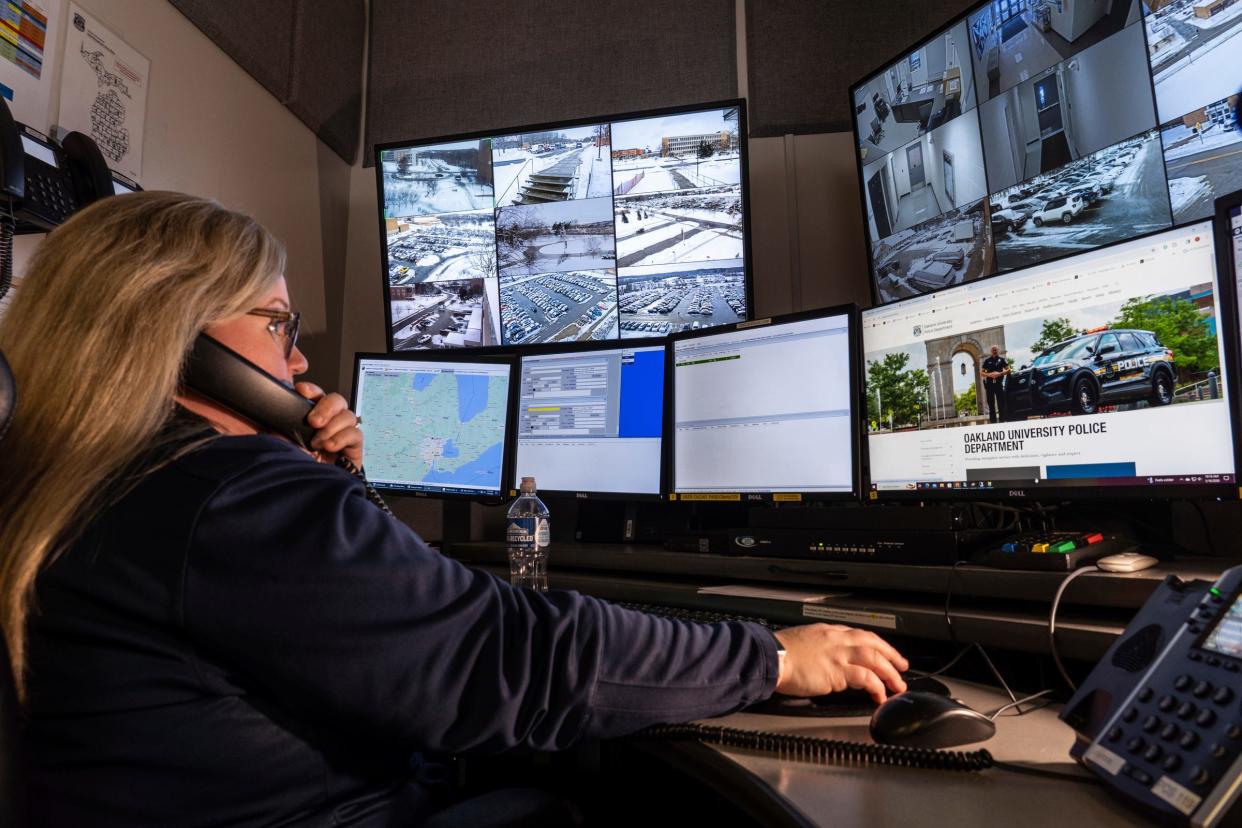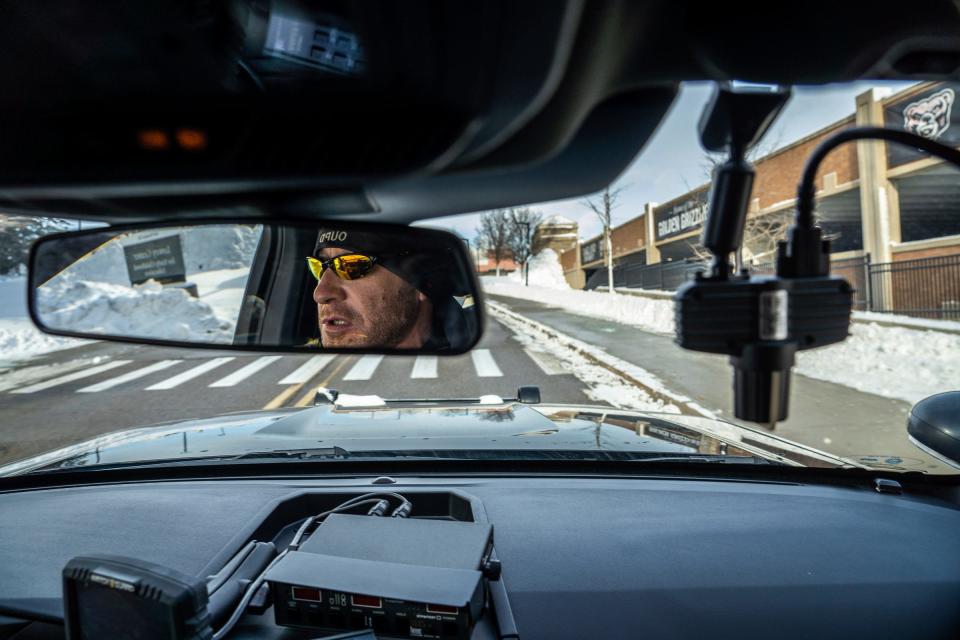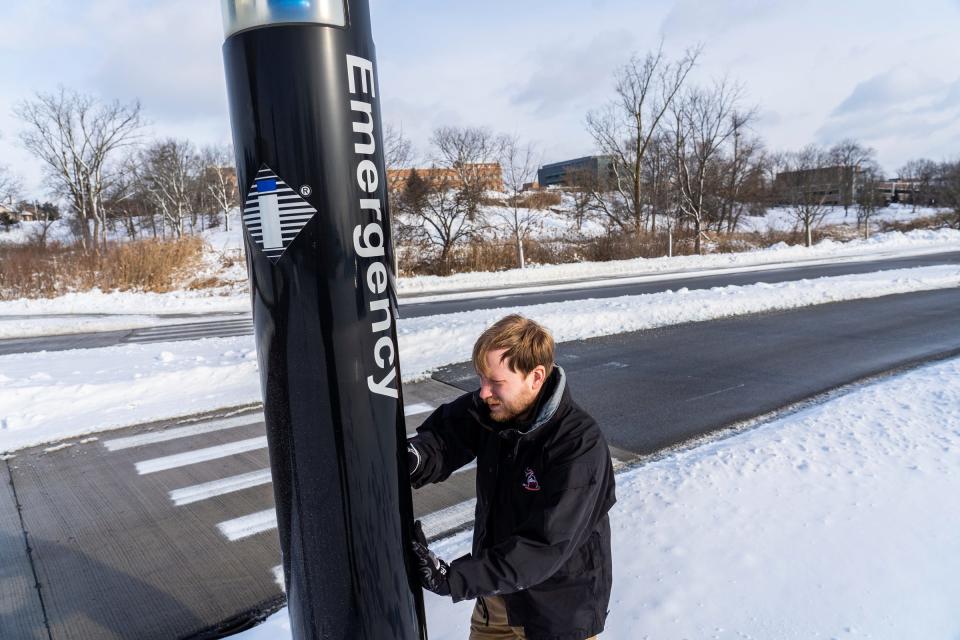Oakland University ranked 7th safest college campus in US

With safety and security at the top of school concerns nationwide, a little-known think tank has issued rankings for what it says are the safest U.S. colleges.
By comparing “the amount of on-campus safety resources, compliance with safety protocols and past crime statistics,” a think tank called Academic Influence, based in Denton, Texas, says it judged the safety levels of hundreds of colleges and universities. Academic Influence used computer programs with machine learning to scrape crime data from the internet to determine the rankings. It says the rankings included only those institutions of higher learning that can deliver a high-quality education.
Then the group announced what it says are the top 15.

Only one Michigan institution of higher learning made the list — Oakland University. Although its rank of seventh safest campus in the nation came as a surprise to OU officials, a spokesman said, OU was quick to defend the accolade, citing heavy spending on security and safety. At the top of the list, and deemed the safest college campus in the country, was Purdue University in West Lafayette, Indiana.
More: These are top colleges for campus safety, says think tank
Nowhere on the list was Michigan State University, where officials said they’ve massively invested in campus security, doing so both before and after last year’s campus tragedy on Feb. 13, when an active shooter fatally shot three students and critically injured five others.
Initially, Academic Influence revealed no safety rankings beyond the top 15. But the Free Press asked to learn about additional Michigan universities. The results put OU at the top and gave a ranking of eighth to MSU. Here is that list:
Oakland University
Lawrence Institute of Technology
Wayne State University
Central Michigan University
University of Michigan
Lake Superior State University
Western Michigan University
Michigan Sate University
Eastern Michigan University
Academic Influence said its rankings used the campus violent crime rate, the campus property crime rate, the violent crime rate of the surrounding city and the city’s property crime rate.
Whether a lower ranking reveals actual safety deficits or the quirks of choosing winners by computers scraping internet data could be kicked around by college debate teams. Still, campus security is a worry for families with students attending or applying to college. Here’s what campus security consultants say any student or parent can do to check on the safety of a particular college or university:
Find the institution’s annual CLERY report, required of all institutions receiving federal student financial aid. Usually, it pops up if you put into a search field just “CLERY” and the name of the college or university. Every prospective student or employee is entitled by law to see it.
Study the statistics. That takes time. Look for the “annual security and fire safety report.” Scan for details, such as the number of full-time security officers versus part-time. See how the school handles sexual misconduct cases.
Visit the campus. Nothing beats talking to students, in dorms and public areas, about how safe they feel.
Both OU and MSU said they’ve made their campuses safer but haven’t stopped fine-tuning efforts. At OU, key buildings will have additional entry doors fitted this year with remote access controls, allowing security staff elsewhere to monitor visitors and lock out those who lack OU credentials, university spokesman Brian Bierley said.
“We have over 200 blue-light emergency phones, roughly one every hundred yards. And we have over 600 video cameras, so the people at our security center can monitor most campus locations at any time, day or night,” Bierley said.

A unique feature of the cameras? They let police provide a remote “video escort” for any student or staffer walking alone to a vehicle, and campus police will zoom to the area if there’s any trouble — including just a dead car battery. But all the technology still needs people to be aware and to communicate, officials said. OU’s orientation programs for new students and staff emphasize looking out for others and, whenever possible, walking in groups, OU campus police chief Mark Gordon said.
“It takes relationships and partnerships with the entire community to create a safe environment. We are very fortunate that we have that type of community involvement at OU,” Gordon said.
In East Lansing, MSU has labored to instill transparency on campus safety after paying a historic $4.5-million fine to the U.S. Department of Education for fumbling the university's response to the sexual abuse of hundreds of athletes by former team doctor Larry Nassar. As part of that settlement, MSU hired a compliance officer to ensure that it was following federal law on reporting sex crimes. Then, after last year’s mass shooting, MSU began to harden its buildings against armed intruders.
In August, MSU told the Free Press of a slow start to that process, caused in part by the delayed delivery of new door locks. Since then, the university said it had made good progress at installing new door locks, allowing those in classrooms and labs to lock out intruders — as they were unable to do during the mass-shooting tragedy at Berkey Hall. About 800 classrooms and teaching labs have “either had locks replaced, lock-down buttons installed or were confirmed to be secured without any additional work,” said Dana Whyte, spokeswoman for the MSU Police and Public Safety Department.
In addition, MSU last month activated a 24-hour Security Operations Center, “which has the ability to remotely lock down” numerous buildings and classrooms, Whyte said. In September, Spartan Stadium turned on metal detectors, which already function at Breslin Center and soon will be added to Wharton Center, Munn Ice Area, and the MSU Tennis Center, the MSU website says. MSU has more than 2,000 surveillance cameras keeping tabs all over its main campus. The newest security wrinkle? Starting this semester, MSU has “a new therapy dog” — a golden retriever named River, who already is “all booked up with events” on which he’ll accompany a lieutenant on patrol, Whyte said.
One skeptic of ranking colleges and universities for safety is S. Daniel Carter, a Georgia-based veteran of campus safety efforts who heads a nationwide team of consultants at SAFE Campus LLC.
“I believe that almost any ranking gives a false sense of security,” said Carter, who said he got involved in campus safety as a student activist at the University of Tennessee in Knoxville, after an on-campus murder. Informed by the Free Press of the Academic Influence ratings, Carter quickly poked holes in the computer-generated rankings. Computers scraping web data can make mistakes, he said.
So Carter simply did what he said any student or parent can do, and can do it better than a computer using Academic Influence's touted “machine learning." Just study an institution’s online CLERY report. A big thing to look for? “What’s the quality of that report?” because some colleges and universities provide few details while others tell all. In ideal cases, the report has "grown into a sort of campus safety handbook." Viewing Oakland University's report, he said, “You can see a lot and it’s positive.”
Carter’s online bio says that, after he graduated in 1994, he worked for a nonprofit group that became the Clery Center, after whose namesake (Jeanne Clery) the federal law on campus safety was named. While there, Carter trained more than 2,000 college officials — so many that, in 2008, he was cited in Congress as “the leading person in this nation” seeking tough action against campus crime. (Jeanne Clery was a freshman at Lehigh University in Bethlehem, Pennsylvania, in 1986 when she was raped and murdered by a fellow student in her residence hall, whose doors had been propped open after dark to allow the return of Clery's roommate.)
Carter told the Free Press that campus safety rankings are useful if they get students, parents and college staffers talking about safety, adding:
“We want everyone to look at the CLERY report and know what resources are available on their campus” — for everything from campus police to self-defense training and date-rape counseling.
Contact Bill Laytner: blaitner@freepress.com
This article originally appeared on Detroit Free Press: Oakland University on list of safest colleges in US

